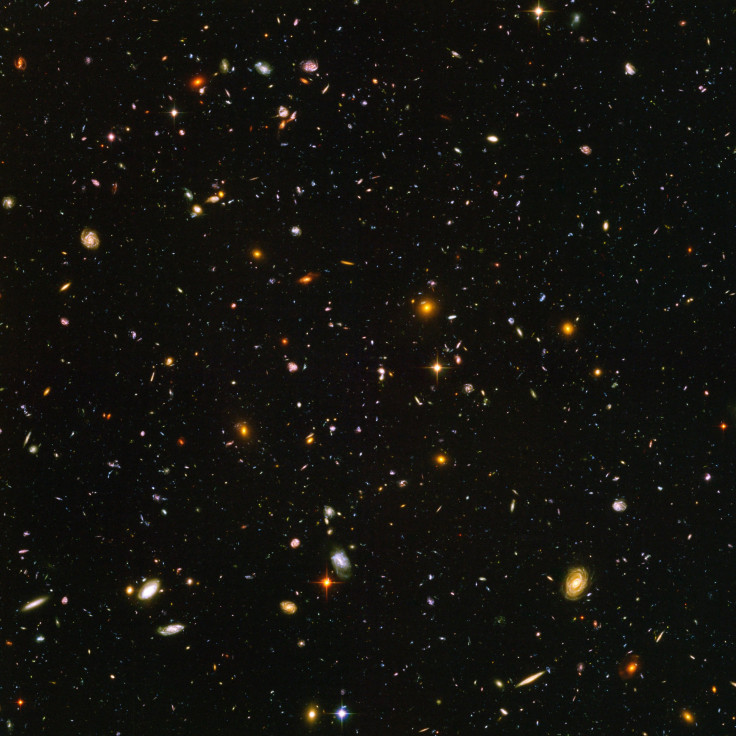Universe's Elusive Dark Energy Can Be Calculated By Measuring The Great Unobservable Voids

Astronomers estimate the amount of dark energy in the Cosmos based on how this mysterious form of energy affects the expansion of the Universe. Researchers of a new study have now proposed measuring the cosmic void to understand how the elusive dark energy works in the Universe.
Cosmic voids are giant, irregular gaps in space. Because they are empty, astronomers cannot directly observe them, so they are detected by mapping galaxies across space and marking the areas between them.
Voids vary in shape as a result of the "redshifting" of galaxies at their borders. As galaxies move away from our us, they cause a visual distortion as their wavelength appear to stretch becoming more red. Galaxies that move toward us would look more blue as their wavelengths appear to get shorter.
The invisible force that stretches our Universe, causing galaxies to move away from each other is dark energy.
In a new study published in the journal Physical Review D. on July 9, researchers said that the distortion could provide a better understanding of the expansion of the Universe and understand dark energy.
Until now, scientists depended on precise measurements of the redshifts of individual galaxies to know how fast the Universe is expanding. This is turn allows them to estimate the amount of dark energy present to drive this expansion.
Study researcher Seshadri Nadathur of the University of Portsmouth in the United Kingdom, and colleagues said that measuring the distortion of gaps could help researchers narrow down the Universe’s expansion even further.
Nadathur explained that this is because the math needed to precisely determine the motion of the galaxies becomes simpler inside these voids.
"Galaxies move because of gravity pulling them toward regions of excess matter, and the problem generally is that our theory of gravity — Einstein’s general relativity — is very complex, and the equations are hard to solve exactly," Nadathur said.
Because of the complex math, scientists use approximations known as 'perturbation theory'. Nadathur said that the perturbation theory works a lot better in void regions than in regions with lots of matter. Thus predictions are simpler and more accurate in voids.
In their study, the researchers said that the improved measurement of the Universe’s expansion are in line with existing theories of how dark energy works in the Universe.
“We are able to get a much better measurement of the cosmic expansion rate 5.5 billion years or so ago," Nadathur said. "It tells us what dark energy has been doing during that time, as well as other things like the curvature of space — which is what gets us cosmologists excited."
© Copyright IBTimes 2025. All rights reserved.





















